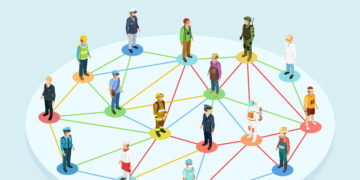The question sounds harsh, even cynical: “why should I care if the peasants are starving?” But history and economics show that hunger at the bottom reshapes life at the top. It alters markets, politics, public health, and the moral fabric that keeps communities together. Caring isn’t only about compassion; it’s also about stability, prosperity, and who we choose to be as a society. This article offers clear, researched reasons to care—rooted in historical experience, development economics, and practical policy—while keeping the tone human and direct.
A hard look at history
For centuries, peasants—small farmers, landless laborers, sharecroppers—have carried the burden of food production with the least protection. In medieval Europe, poor harvests meant “hungry seasons” long before outright famine; rent, tithes, and dues left families with thin margins. In early modern Asia and colonial contexts, taxation, debt bondage, and coercive crop policies amplified climate shocks. Nineteenth‑century Ireland’s potato blight and the Bengal famine of 1943 are stark reminders that hunger often grows from policy choices layered on top of natural stress.
Research in economic history supports a pattern: when grain prices spiked and wage protections were weak, rural households cut meals, sold tools or livestock, and slipped into long‑term poverty. Parish records, grain market data, and mortality registers show how quickly hunger cascaded into disease, migration, and social rupture. This past isn’t just a museum piece. Its mechanisms—fragile incomes, exposure to price swings, limited bargaining power—still describe millions of smallholders and rural laborers today.
The plight of peasants
What was the plight of peasants? It was living one failed harvest away from disaster. Paying rents or taxes that rose when yields fell. Working without leverage in systems tilted toward landlords, intermediaries, or state collectors. Facing corvée obligations, sharecropping terms that captured most of the crop, or debts that rolled forward with punishing interest. It meant malnutrition, child labor during planting and harvest, and few legal remedies when markets or monsoons turned.
Even in better years, hunger often hid in plain sight. Diets were narrow and seasonal. Illnesses tied to poor sanitation and weak immunity made labor less productive, which in turn locked families into low wages. With no buffers—no savings, no reliable credit, and little land security—small setbacks became generational losses. That is the anatomy of precarity: high effort, low control, and a constant threat that tomorrow’s weather or prices will undo today’s work.
Why hunger anywhere affects life everywhere
Hunger is a systemic risk, not just a private tragedy. When basic needs go unmet for many, politics destabilize. Revolts and legitimacy crises in early modern Europe, food riots in industrial cities, and contemporary unrest during global price spikes all share a throughline: food insecurity erodes trust in institutions. Governments seen as indifferent to hunger lose consent; that invites repression or collapse, neither of which is good for long‑term prosperity.
The economics are equally direct. Malnutrition in childhood lowers cognitive development and earnings decades later. Economists studying nutrition programs have found high returns on investment because better‑fed children learn more and earn more as adults. At the macro level, healthier, well‑nourished labor forces are more productive; farmers with predictable markets and protections invest in tools, irrigation, and soil health. That reduces price volatility and builds reliable supply chains—benefits that reach consumers, retailers, and exporters far from the farm.
Public health also rides on nutrition. Underfed populations face higher susceptibility to infectious disease and slower recovery. During shocks—droughts, floods, pandemics—undernutrition compounds risk. Hospitals fill faster, and recovery takes longer. Investing in food security, particularly maternal and child nutrition, prevents cascading costs in healthcare and social services.
The best arguments you haven’t considered
Self‑interest, properly understood. Caring about hunger is hedging your own risks. Stable food systems reduce the chance of price spikes that squeeze household budgets. They also reduce the odds of political unrest that disrupts business, investment, and daily life.
Moral circle expansion that pays dividends. Dignity isn’t a luxury; it’s infrastructure. Societies that protect minimal thresholds—enough food, basic healthcare, fair recourse—generate trust. That trust makes regulation easier, tax systems fairer, and emergency responses faster. Over time, it lowers the cost of governing.
The compounding returns of child nutrition. Few policies are as cost‑effective as preventing undernutrition in the first thousand days of life. Better growth leads to better schooling, higher lifetime earnings, and intergenerational gains. If you care about long‑run productivity, you care about early nutrition.
Institutional legitimacy as an asset. When communities see that leaders take hunger seriously, compliance with law improves and corruption loses cover. Social contracts strengthen because people believe their sacrifices have purpose and fairness.
Cultural continuity and knowledge. Smallholders hold ecological and agronomic knowledge that modern systems regularly rediscover. Food security preserves languages, recipes, seeds, and practices that make regions resilient to climate shifts. That living library is a public good.
A direct answer to the question
“Why should I care if the peasants are starving?” Because hunger corrodes stability, undermines growth, and violates basic dignity. Because it is preventable at reasonable cost with tools that already work. Because a society that leaves producers of its food without food is telling a story about itself that ends badly. The shortest answer is practical: it affects your security and prosperity. The deepest answer is ethical: no community is healthy when it normalizes preventable suffering.

Practical levers that work
Speed matters in hunger, and evidence points to specific tools. In the near term, cash transfers help households buy food immediately while preserving choice and local markets. School meals protect learning and attendance while delivering reliable calories. Micronutrient fortification and supplements reduce anemia and stunting at scale with modest budgets.
In the mid‑term, resilience is the goal. Crop insurance that actually pays out, grain storage that limits post‑harvest loss, rural roads that connect farmers to markets, and drip irrigation that stretches scarce water all reduce the volatility that turns a dry spell into a disaster. Extending agricultural extension services and climate‑smart practices—improved seed varieties, diversified cropping, soil management—helps farmers hedge risk.
The long game is rights and access. Secure land tenure encourages investment in soil and water. Fair credit prevents debt spirals and lets households smooth consumption through lean seasons. Education—especially for girls and young women—raises household resilience and nutrition outcomes. Transparent procurement and targeted safety nets reduce leakage and build fiscal trust.
Data and tech support these levers, not replace them. Early warning systems flag crop failures before famine; satellite and weather data guide planting and insurance triggers. Mobile payments move aid quickly and reduce theft. But the core remains human: reliable institutions and fair rules.
Common objections, better answers
“Charity breeds dependence.” Evidence from cash transfer programs and time‑limited support shows increased investment in tools, schooling, and small enterprises. With the right design, assistance becomes a springboard, not a hammock.
“Corruption will swallow the money.” Leakage is real, but transparency tools—digital IDs, mobile disbursements, e‑procurement, community oversight—shrink it. Targeted programs with public dashboards create accountability that bluntly delivered subsidies lack.
“Not my responsibility.” Interdependence is a fact. Food prices, migration, disease, and political stability cross borders and neighborhoods. Caring is cheaper than managing the fallout of indifference.
“We should fix hunger at home first.” It’s not either‑or. The same principles—school meals, food banks, income support—work domestically. Budgets can support local and global action simultaneously, and lessons learned travel in both directions.
Case studies that teach
Targeted school meals and attendance. Where schools offer reliable meals, attendance and learning improve, and parents keep children in class during lean seasons. This protects long‑run earnings and breaks cycles of seasonal child labor.
Public works with safety nets. Blended programs that provide predictable seasonal income in exchange for building local assets—terraces, small dams, roads—both feed families and harden communities against the next drought. The return is not just calories; it’s infrastructure and skills.
Reform and digitization of food distribution. When ration systems modernize—clean rosters, digital tracking, grievance redressal—leakage falls and households receive what policy promised. The result is both more food and more faith in institutions.
Words matter
Language frames people as problems or partners. “Peasant” is a historical and sometimes pejorative label; today we might say smallholder, farmworker, or rural household. Precision and respect change how policies are designed and funded. When speech strips dignity, it greases the skids for neglect. When speech recognizes agency, it invites partnership.
Metaphors can help without dehumanizing. Hunger is not a storm that passes on its own; it is a fire that burns faster in dry seasons and calmer when we build good firebreaks—savings, insurance, storage, safety nets. This kind of framing keeps urgency high without turning people into abstractions.
A brief lexical aside
What is the word for deep black? English offers many: jet‑black, pitch‑black, inky, obsidian, ebony, coal‑black, sable. “Jet‑black” feels common and emphatic; “inky” suggests liquid depth; “obsidian” is mineral‑sharp; “sable” reads literary. Choice of word shapes mood—precision in language helps headlines and narratives cut through without resorting to shock.
Today’s smallholders and tomorrow’s risks
Globalization and climate have created a “new peasantry” in many regions. Smallholders, migrant farmworkers, and informal urban workers make and move food while absorbing the shocks of droughts, floods, pests, pandemics, and wars. Export bans, port closures, and energy spikes ripple into bread prices and fertilizer shortages. Heat waves crush yields; floods wipe out storage; pests expand their range into new latitudes.
Adaptation is necessary and possible. Diversifying crops, improving water capture and storage, investing in cold chains and rural electrification, and building fair contracts between farmers and buyers reduce fragility. Regional grain reserves and rules against knee‑jerk export bans keep prices steadier when futures markets rattle. Climate‑smart agriculture is not a buzzword when it safeguards both food and income.
What individuals and communities can do
Start local, think systemically. Reduce food waste at home; support farmers’ markets and fair‑trade options that pass value back to producers; advocate for school meal programs and strong nutrition standards. Volunteer with or donate to local food banks and community kitchens. If you work in finance, law, data, logistics, or design, lend your skills to organizations modernizing safety nets, improving supply chains, or building early warning tools.
Vote and speak up. Policies that matter—nutrition assistance, infrastructure budgets, climate adaptation, transparent procurement—respond to public pressure. Share credible information, not panic. Ask representatives how they plan to stabilize food systems and protect vulnerable producers and consumers.
Short answers to common questions
Why should I care if the peasants are starving answer. Because hunger erodes stability, lowers productivity, and violates human dignity—and because proven, affordable solutions exist that benefit everyone.
Why should I care if the peasants are starving qui. If “qui” echoes the French “who,” the answer is that we all have a stake: producers, consumers, taxpayers, and neighbors. The system works only when its foundational workers can eat.
What was the plight of peasants? Exploitative rents and debts, seasonal hunger, limited rights, and little protection against weather, war, or price shocks. Hard work met fragile security.
What is the word for deep black? Jet‑black, pitch‑black, inky, ebony, obsidian, coal‑black, or sable—choose for tone and texture.
Closing
Caring about hunger among the least protected isn’t sentimental; it’s strategic and just. A society that feeds those who feed it is safer, richer, and truer to its own ideals. The history is clear about what happens when we ignore this. The economics are clear about the returns when we act. The choice is whether we build routines that keep everyone above the waterline or accept volatility and moral erosion as our baseline.
The ask is simple and professional: pick one action—support a school meal, back a safety‑net reform, help a local food bank, reduce waste, or lend your expertise to a food system project. Then pick another next month. That is how systems change: not in one grand gesture, but in steady, shared work that honors the people whose hands bring food to our tables.
References
- Amartya Sen, Poverty and Famines: An Essay on Entitlement and Deprivation — Seminal analysis showing how famines arise from entitlement failures and policy, not only food shortages.
- FAO (Food and Agriculture Organization), The State of Food Security and Nutrition in the World — Annual data on global hunger, child stunting, and drivers like conflict and climate.
- World Bank, Repositioning Nutrition as Central to Development — Evidence on the high returns of early-life nutrition and the economic costs of undernutrition.
- IPCC Assessment Reports — Findings on climate change impacts on agriculture, yields, and food system stability.
- UNICEF, The First 1,000 Days — Research on maternal and child nutrition and long-term human capital outcomes.
- Esther Duflo & Abhijit Banerjee, Poor Economics — Field evidence on how targeted anti-poverty and nutrition interventions affect behavior and incomes.
- Elinor Ostrom, Governing the Commons — Insights on community governance and how local institutions manage shared resources that affect rural resilience.
- Angus Deaton, The Great Escape — Analyses of health, nutrition, and economic development over the long run.
- Alex de Waal, Mass Starvation — Contemporary history of famine, politics, and prevention strategies.
- IFPRI (International Food Policy Research Institute), Global Food Policy Reports — Policy evaluations on safety nets, agricultural innovation, and resilience.
- WFP (World Food Programme), Hunger Hotspots and Early Warning — Monitoring frameworks for anticipating and mitigating food crises.





















































